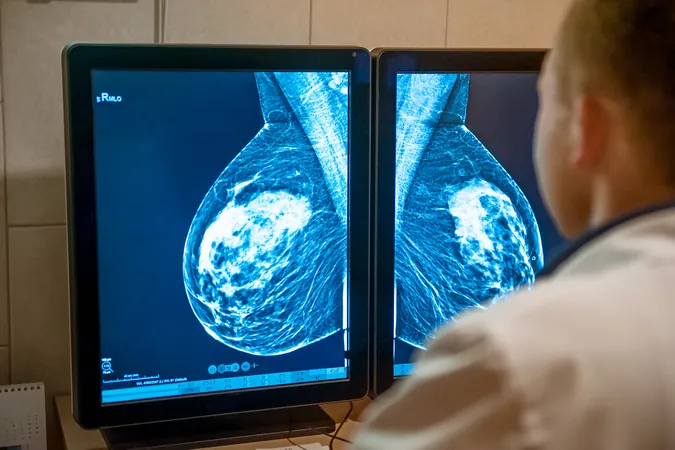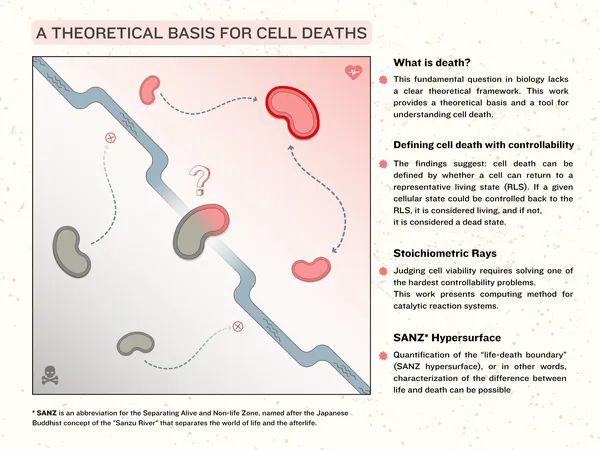
Shocking Discovery: Normal Breast Cells in Healthy Women May Mimic Cancer Characteristics!
2024-11-27
Author: Emily
Introduction
Recent research published in the prestigious journal *Nature* has upended longstanding beliefs about breast cancer, revealing that certain cells in the breast tissue of healthy women may harbor genetic anomalies typically associated with tumors. This groundbreaking study could reshape how we understand the genetic foundations of breast cancer, significantly impacting early detection methods and redefining what we consider 'normal' tissue.
Study Overview
In this study, 49 healthy women undergoing breast reduction surgery were closely examined, and scientists took samples of their breast tissues. They specifically looked for chromosomal differences in these supposed normal tissues and compared them with data from clinical cases of breast cancer. Utilizing advanced techniques like single-cell DNA sequencing, the researchers analyzed over 83,000 epithelial cells, unveiling startling changes indicative of precancerous conditions.
Key Findings
Notably, it was found that 100% of these healthy women possessed rare aberrant epithelial cells in their breast tissue, with a median presence of 3.19%. Alarmingly, the results suggest that the frequency of these abnormal cells increases with age, with older participants demonstrating more pronounced chromosomal irregularities. The anomalies, which featured invasive cancer-like characteristics, showed that a staggering 82.22% of these rare cells underwent clonal expansion, a process frequently seen in actual breast cancers.
Chromosomal Changes
Among the chromosomal changes detected, researchers identified particular modifications such as extra copies of chromosome 1q and losses of chromosomes 10q, 16q, and 22q—regions known for their association with breast cancer. Principal investigator Dr. Nicholas Navin pointed out, 'Seeing this genetic landscape in seemingly normal breast tissues could easily lead a specialist to misdiagnose these cells as invasive cancer.' He added, 'We’ve learned that what we deemed normal is actually fraught with irregularities, leading us to ponder when cancer actually begins.'
Implications for Early Detection
As scientific advancements in early detection tools, including molecular diagnostics, continue to evolve, these findings pose new challenges for the medical community. The risk of generating false positives is a significant concern, as normal cells might mistakenly be interpreted as indicators of invasive breast cancer.
Broader Biological Phenomenon
What’s even more intriguing is the possibility that similar abnormalities in epithelial cells could have implications for other organs in the body. Mapping studies highlighted the localization of these abnormal cells within ductal and lobular structures of the breast, suggesting a broader biological phenomenon.
Conclusion
Dr. Navin concluded, 'This highlights the imperfection of human biology; such aberrant cells can emerge throughout our lives. Although this doesn’t imply that everyone is a walking time bomb for cancer, it emphasizes the urgent need for larger-scale studies to explore the potential implications in cancer development across various types.' As we progress in our understanding of cancer biology, this pivotal research marks the beginning of a paradigm shift in how we detect and diagnose breast cancer. What does this mean for the millions of women worldwide undergoing routine screenings? Only time—and further studies—will tell. Stay tuned as the fight against breast cancer evolves with these shocking revelations!









 Brasil (PT)
Brasil (PT)
 Canada (EN)
Canada (EN)
 Chile (ES)
Chile (ES)
 España (ES)
España (ES)
 France (FR)
France (FR)
 Hong Kong (EN)
Hong Kong (EN)
 Italia (IT)
Italia (IT)
 日本 (JA)
日本 (JA)
 Magyarország (HU)
Magyarország (HU)
 Norge (NO)
Norge (NO)
 Polska (PL)
Polska (PL)
 Schweiz (DE)
Schweiz (DE)
 Singapore (EN)
Singapore (EN)
 Sverige (SV)
Sverige (SV)
 Suomi (FI)
Suomi (FI)
 Türkiye (TR)
Türkiye (TR)